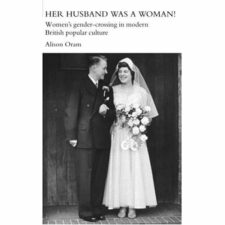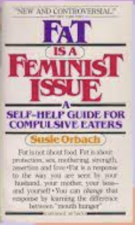Barbara Pym’s novels provide a social history of the period over which she wrote from the 1920s to 1980. ‘Young Men in Fancy Dress’, written when she was sixteen, inspired by the 1920s, is unpublished. Unlike the novels that follow it depends on its 1920s setting for its story. In comparison, the later novels are subtle historic accounts. From her first published novel, Some Tame Gazelle (written 1935-50, published 1950) to her posthumously published An Academic Question (written 1970, published 1986), Pym’s work is a social history of England from the 1930s to 1980. Although her novels are seen as stories of middle class village life, largely featuring spinsters and vicars, they cover some of the big questions of the era as well as deft descriptions of life in villages, the suburbs and city communities. Her approach to feminist issues, most clearly enunciated in Quartet in Autumn (written 1973-76, published 1977) and An Academic Question permeates her work from the 1930s; class and race, although less fundamental to her reflections, appear in particularly strong terms in An Unsuitable Attachment (written 1960-65, published 1982) in which class is central to the suitability of the attachment at the heart of the novel; in Less Than Angels (written 1953-54, published 1955) the racist elements of anthropological endeavour are probed; and An Academic Question in which the strong reference to race issues apparent in the original draft is moderated but not entirely lost.
Other writers use the exigencies of war on the home front as the focus of their work. For example, Elizabeth Jane Howard’s impressive trilogy[1] is a family saga of the war years and aftermath. The trilogy illuminates a major difference between a detailed treatment and Pym’s sparse but equally effective depiction of English society after the Second World War. Howard’s social history is a detailed account about a specific period, while Pym places her characters in a perceptive, but gently observed context. She observes the aftermath of war, such as lack of housing, rationing and bombed buildings though poignant as well as comic scenes, characters’ ruminations and understandings, topical issues associated with the church as well as class, race and feminism.
Some Tame Gazelle; Civil to Strangers (written 1936 -1938, published 1988) and Crampton Hodnet (written 1939 – 1940, published 1985) depict a particular type of English society between the wars. Two spinsters’ interest in the church, the Archdeacon and curates provide the opening scene. However, we also learn that marocain is used for semi-evening wear, that corsets are worn (and sometimes need to be ‘strengthened’), garments are made over (although the Archdeacon’s wife’s smart attire is unlikely to suffer this particular fate), an Albanian embroidered waistcoat can be worn with a white blouse and home spun skirt, that the serial in the parish magazine can include a ‘drunken organist’ and, as expected, a garden fete is in the offing. Even an unconventional allusion to the lavatories in turn reflects the war work undertaken by one woman protagonist. The concert features local identities and a mixture of recitations, classical music and songs such as Believe me if all those endearing young charms. Meals include boiled chicken or duck (for the curate) and cauliflower cheese (for the seamstress); mutton; scrambled eggs or even baked beans (complete with cigarette ash – there is a lot of smoking); risotto (the Count’s recipe) or another exotic dish, ravioli; tongue and trifles, jellies and fruit salad and cream. They drink sherry, gin, coffee or tea to deal with the anticipation of a wedding, and champagne at the wedding. Women darn socks, contribute to the garden party and concert, are spinsters, wives, home owners and academics. The numbers of the latter have become increased to the extent that toilet facilities have been built in the main library! Transport is by train and taxi. A lantern slide show accompanies a lecture, is presided over by a woman and, more significantly, attests to missionary intrusion into African life. Russians visit the Oxford library and China is visited by an English librarian.
In Civil to Strangers we learn that camphorated oil is an ‘old fashioned’ cold remedy; the Times crossword was in vogue; a grey squirrel coat is acceptable wear; and although lacrosse is played, cricket is a constant sporting motif. However, the major theme is the allure of foreign places and visors to the village. Crampton Hodnet provides less social history but introduces one of Pym’s strongest women, in a traditional role of the time, a companion. Pym’s imagined future for the Nazis were, prudently, edited from Some Tame Gazelle by the time it was published.
In her later novels, Pym the social historian is more apparent, together with a more comprehensive canvas. In Excellent Women central characters share a bathroom, not because of their economic circumstances but because of the post-war lack of housing. Helena is an anthologist, affects trousers and married to the decorative Rockingham who has just left the navy; Mildred appears to be typical spinster, working on behalf of impoverished gentlewomen but by giving her a strong inner voice Pym raises feminist issues; Edward Bone is an anthropologist who works with Helena, but unlike her, combines his application to scientific study with religious beliefs.
An Academic Question, while some aspects maintain Pym’s subtlety, returns in some ways to the way in which the social environment was explicitly revealed in her earliest novel. The 1970s are drawn through Caro Grimshaw, her concerns about whether she should be in paid work and her limited options, her responses to her child and attitudes towards her husband’s infidelities; a new university where radical activity is an important part of the academic scene, the male/female roles at the university and questions around academic research; and explicit reference to the questions raised by the women’s movement in the period. Quartet in Autumn, a more poignant novel than most of Pym’s work, raises the questions that must be asked about women’s earlier entrée to the workforce. The four work in an unidentifiable office with unidentifiable work. However, Pym’s novel highlights the role of the women who retire: they will not be replaced. Marcia’s retirement hastens her dementia; Letty is faced with having to find new accommodation and some interests. Letty’s future is not entirely bleak, but this is because she does not ask very much of life; Marcia demands more and dies.
This year is the centenary of Barbara Pym’s birth on the 2nd June 1913. Her novels are being reconsidered at conferences and readings in the UK and US. In the main these have concentrated on Pym’s life and its relevance to her writing. However, while her novels are worth reading for many reasons, they are wonderfully observed and it is also important to recognise them as significant pieces of social history.
Dr Robin Joyce has most recently written about Barbara Pym in her doctoral studies in English Literature at the Australian National University. She began her career as an historian, writing and publishing on women in trade unionism and the labour movement. Dr Joyce has lectured in communication at the University of Canberra, taught in high schools and been a public servant. An authority on Barbara Pym and her writing, she has presented at conferences in the US, UK and Australia. Now enjoying living in London, she never complains about the weather.
[1] Elizabeth Jane Howard, The Light Years: Volume 1 of The Cazalet Chronicle (London: Macmillan, 1991); Marking Time: Volume 2 of The Cazalet Chronicle (London: Macmillan, 1992) Confusion: Volume 3 of The Cazalet Chronicle (London: Macmillan, 1994) and Casting Off: Volume 4 of The Cazalet Chronicle (Macmillan, 1995).







